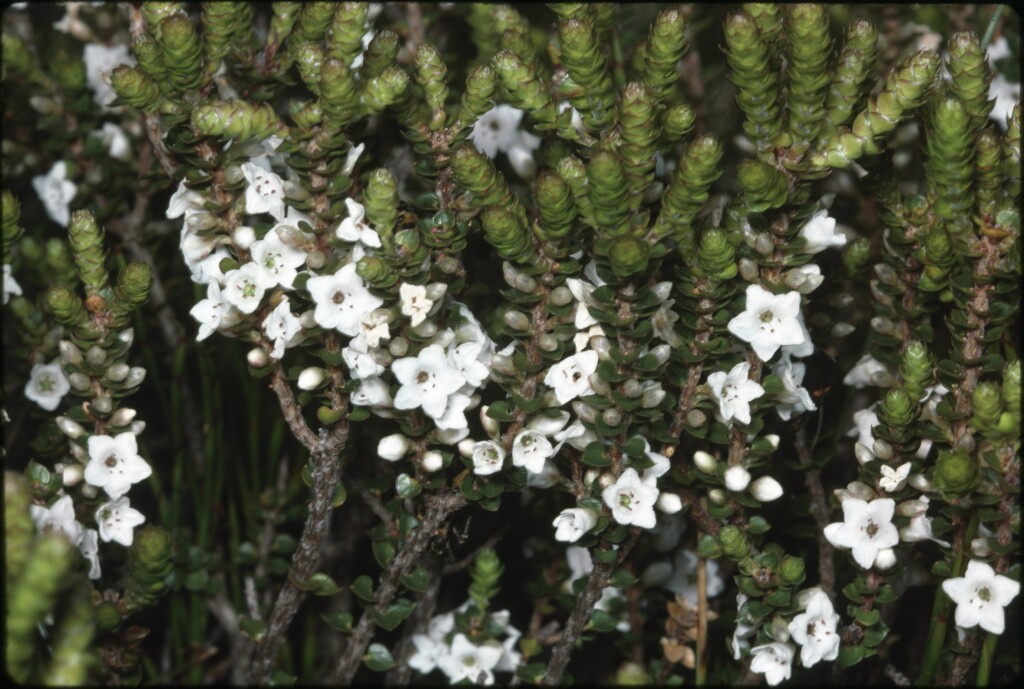Epacris microphylla
R.Br. Coral HeathStraggling to erect shrubs to c. 1.5 m high. Branchlets villous. Leaves suberect to widely spreading, concave, venation not apparent, broadly ovate to deltoid, (occasionally wider than long), c. 2–3.5 mm long and wide, glabrous, apex abruptly tapered and incurved at tip; base cordate; margins usually minutely serrulate or ciliolate; petiole 0.3–1 mm long. Flowers shortly pedicellate in axils along branches; bracts c. 16–20; sepals ovate to ovate-elliptic, 1.5–3 mm long, obtuse to acute; corolla white, campanulate, tube 1.5–2 mm long, shorter than calyx, lobes 2–3 mm long; anthers enclosed or partly exserted; ovary glabrous, nectary scales rounded, style straight-sided, 0.6–1 mm long, glabrous. Capsule depressed-globular, c. 2 mm diam. Flowers Sep.–Dec.
GipP, OtP, NIS, EGL, EGU, WPro, HSF, HNF, OtR, Strz, MonT, HFE, VAlp. Also Qld, NSW, ACT. Known in Victoria only from scrubs or low damp heath on granite-derived soils on Wilsons Promontory and the far east of the State (e.g. Genoa Peak area, Howe Range east of Mallacoota).
Many old records of Epacris gunnii have been erroneously recorded as this species. Mapped distributions may include some of these records.
Albrecht, D.E. (1996). Epacridaceae. In: Walsh, N.G.; Entwisle, T.J., Flora of Victoria Vol. 3, Dicotyledons Winteraceae to Myrtaceae, pp. 464–509. Inkata Press, Melbourne.
 Spinning
Spinning


